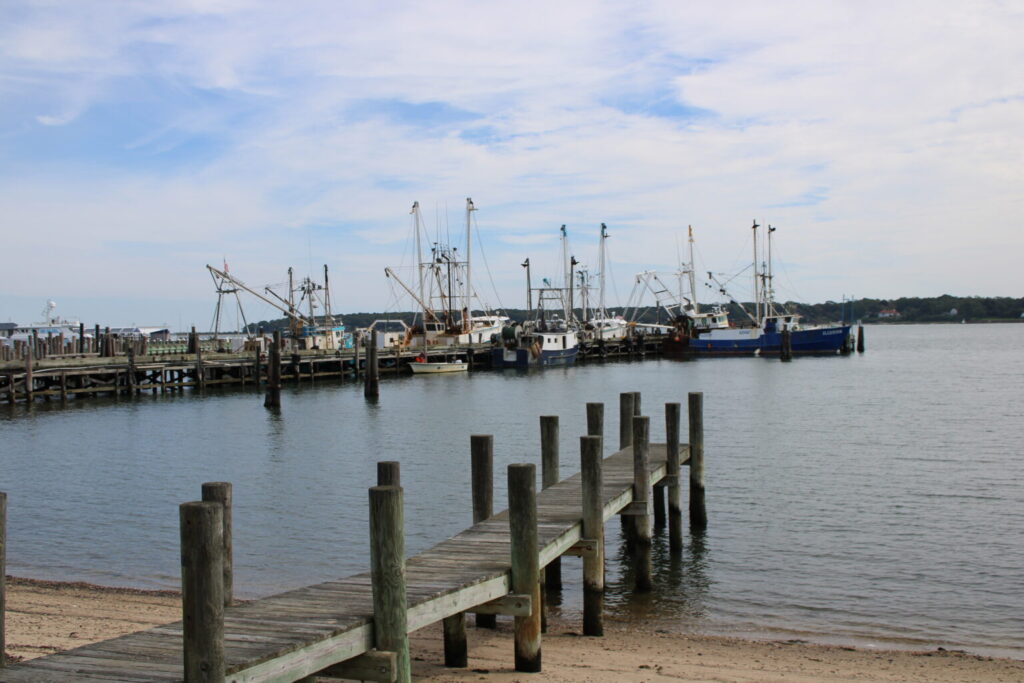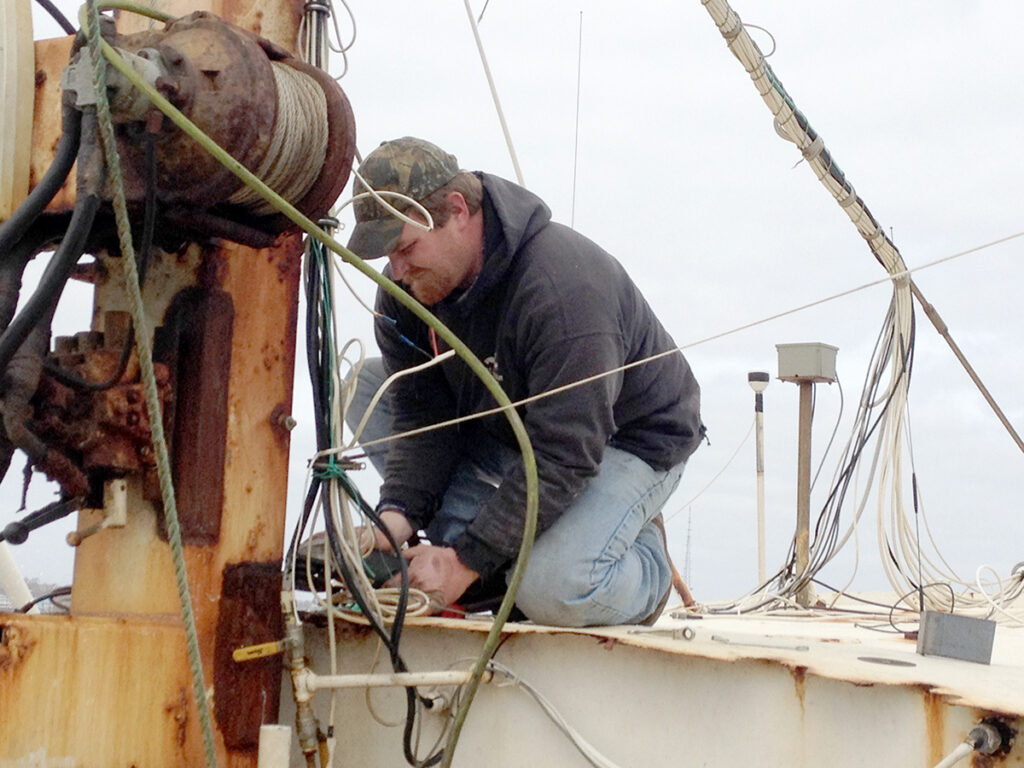Maritime businesses view ‘Working Waterfront’ bill as lifeline

Jeff Strong gets calls regularly asking him to sell his waterfront Mattituck marina for development. He declines. For the past six years, he and his team have been trying to get approval for a storage building to expand their indoor capacity at Strong’s Marine — just to keep operating as a working waterfront.
Now, a new Suffolk County law might ease that pressure.
County Executive Ed Romaine signed the “working waterfront” bill at Greenport’s railroad dock Sept. 29, establishing protections for the area’s commercial fishing and maritime heritage. The county has allocated $9.5 million through 2028 to support conservation easement acquisitions.
“My concern would be people who aren’t necessarily boaters, or aren’t as connected with the water, may not understand how high priority this is to help keep the fabric of the North Fork what it’s always been,” Mr. Strong told the Suffolk Times. “It’s clearly an integral piece of what the North Fork is all about.”
Steve Clarke, owner of Greenport Yacht & Shipbuilding, has watched property prices climb over the years. He worries the working waterfront could disappear within a decade because waterfront property is so valuable that owners decide to cash out rather than continue operating.
“I’d hate to see that,” he said.
The groundbreaking legislation establishes a framework for acquiring conservation easements on working waterfront properties, allowing the county to purchase development rights from owners of commercial waterfront sites. That secures the properties for maritime activities indefinitely.
Commercial waterfront property owners can apply to a newly formed 17-member working waterfront committee for conservation easements. The protective framework is modeled after the county’s farmland preservation program, launched 50 years ago.
Industries including aquaculture, marine repair, commercial fishing and recreational boating are protected under the guidelines.
For oyster farmers like Ian Wile, the bill addresses a critical need.
“One of the biggest challenges for nearly all oyster farmers is land-based access to do work,” said Mr. Wile, co-founder of Little Creek Oysters Farm in Greenport. “Unfortunately, the number of those land-based places has shrunk over the years and continues to shrink.”
Mr. Wile said that while the bill is a major step forward, he’d love to see it extended to recognize that “the working waterfront is most often supported by non-waterfront properties.”
Shipyards and marinas can be protected, but support businesses can’t.
Nate Phillips runs the pack house at the end of Monsell Place in Greenport. His whole livelihood has been the waterfront — he jokes that after he was born, his parents took him on their boat before going home.

Mr. Phillips constantly travels between Greenport and Mattituck, picking up seafood from boats and bringing it back for packing and distribution. He goes directly to the boats, giving fishermen two to three more hours on the water instead of traveling to Greenport themselves.
“Anyone who works on the water has to come back to a place — a place to either unload their product, do their gear work, do their mechanics, their maintenance,” he said. “You can’t do that at sea.”
For Mr. Phillips, the bill ensures he has that place.
Communities on the North Fork will compete with places like Montauk and Shinnecock Marina in Hampton Bays for the funding. There’s no specific sequence for the rollout — any property owner can apply for the funding.
“I think it’s going to be enormously helpful to property owners throughout Suffolk County,” Greenport Mayor Kevin Stuessi said.
Mr. Stuessi hopes Southold Town will update its Community Preservation Fund plan so the town and village might partner on opportunities. He doesn’t have specific projects in mind but said Greenport has several people who might apply.
To Mr. Clarke at Greenport Yacht & Shipbuilding, the bill is already creating awareness of just how many working waterfront properties and businesses exist.
“It lets everybody know, and people that normally wouldn’t know, that there is a large amount of working waterfront in Suffolk County,” he said. “It shines a light on the fact that there really is such a thing as a working waterfront, and it’s vitally important.”
Chris Pickerell, marine program director for Cornell Cooperative Extension’s Back to the Bays program, has worked for over 30 years on coastal and marine habitat restoration. As the son of a bayman and oyster farmer, he knows first hand the difficulties those professionals face in getting water access.
“We have bumper stickers that say, ‘no farms, no food,’” said Mr. Pickerell, referring to the landmark farmland preservation program. “The same goes for, ‘no docks, no water access, no fish.’”








